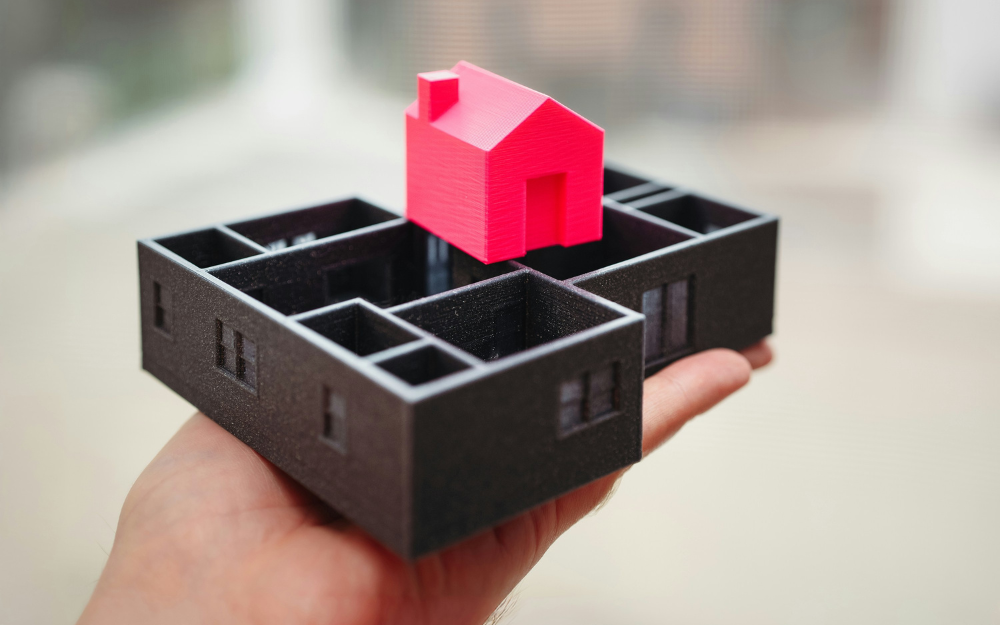While national home values rose 1.7 per cent over the quarter, representing a slight decrease on the previous quarter’s growth of 1.9 per cent, it’s interesting to note how conditions have softened over the past 12 months when we compare the current 3 month increase in values to the 3.2 per cent increase recorded this time last year.
At the end of July, we have seen 18 consecutive monthly increases in home values nationally. Following a -7.5 per cent decline recorded between May 22 and Jan 23, the national HVI has gained 13.5 per cent and values have consistently pushed to new record highs since November last year.
A softening cycle
While the overall growth rate remains positive, it is clear momentum is leaving the cycle and conditions are becoming more diverse.
Three capitals recorded a decline in values over the quarter. Melbourne led the decline with a -0.9 per cent fall, followed by Hobart recording a – 0.8 per cent decline and Darwin dropping by -0.3 per cent.
The rolling quarterly pace of growth has slowed markedly in Sydney to 1.1 per cent, a fraction of the 5.0 per cent quarterly gain recorded at the same time last year.
The mid-sized capitals bucking the trend
Perth, Adelaide and Brisbane are continuing to record growth, with the quarterly pace of growth in Perth tracking at 6.2 per cent, while growth in Adelaide accelerated to 5.0 per cent and Brisbane values rose by 3.8 per cent.
CoreLogic’s research director, Tim Lawless, said differences in housing supply around the nation is a key factor explaining the diverse outcomes in housing growth trends. “The number of homes for sale in Brisbane, Adelaide and Perth is more than 30 per cent below average for this time of the year, while weaker markets like Melbourne and Hobart are recording advertised supply well above average levels,” Mr Lawless noted.i
The lower end of the market leading the way
Decreases in borrowing capacity and affordability factors is skewing demand towards the lower price points of the market, with lower quartile values leading the growth trend across every capital city except Darwin and Canberra. At a combined capital city level, lower quartile dwelling values are up 3.3 per cent over the past three months compared with a 0.8 per cent increase in upper quartile values.
The capitals are outpacing the regions
Growth in capital cities housing values continue to record greater gains than the regions. The combined capitals recorded a 1.8 per cent quarterly increase compared to a rolling quarterly rise of 1.3 per cent across the combined regionals index. Regional Victoria was the only ‘rest of state’ area to record a decline in values over the three months ending July, with values falling 1.4 per cent.
Units rising faster than houses and an upswing in investors
With the exception of Darwin and the ACT, units are now rising faster than houses across most of the capitals. Mr Lawless explained, “Most cities now have a median house value that is at least 1.5 times higher than the median unit value. With stretched housing affordability, lower borrowing capacity and a lift in both investor and first home buyer activity, it’s not surprising to see the unit sector outperforming for a change”.
Another key trend emerging from ABS lending indicator data is the upswing in lending for investment purposes. Nationally, the number of investor loans are up 24.8 per cent on last year.
Looking forward
According to Eleanor Creagh, senior economist with PropTrack from REA Group, “Strong population growth, tight rental markets and home equity gains continue to bolster demand. Meanwhile, building activity remains challenged, resulting in the chronic shortage of housing being exacerbated by a lack of new construction.”ii
However, although unmet demand and constraints on new housing supply are likely to support home prices and remain a feature of the market for some time yet, downside risks are considered to be growing.
Housing affordability is becoming more challenging in markets where values are rising faster than incomes. In March the national dwelling value to income ratio rose to 7.7 and the June quarter data published next month is anticipated to record another increase which will serve to put the brakes on growth.
Dwelling values over the quarter
Melbourne
The Victorian capital posted a -0.9 per cent quarterly decline according to CoreLogic figures taking the city’s median dwelling price to $781,949. The gross rental yield figure for Melbourne remained unchanged over the quarter at 3.6 per cent.
Sydney
In the three months to the end of July, dwelling values in Sydney increased 1.1 per cent resulting in a median of $1.175 million. The gross rental yield for the Harbour City is currently the lowest of the capitals at 3.1 per cent.
Brisbane
Gaining momentum, the Queensland capital is again the second most expensive capital city with dwelling values at $873,987 after a quarterly rise of 3.8 per cent. Brisbane has recorded a gross rental yield of 3.7 per cent.
Canberra
The national capital recorded a modest 0.5 per cent increase during the quarter with the median now sitting at $870,910. The gross rental yield in Canberra is 4.0 per cent.
Perth
Continuing it’s run of strong performance, Perth’s dwelling values jumped 6.2 per cent in three months taking its median dwelling price to $773,335. Perth recorded a gross rental yield of 4.3 per cent.
For more information about how you might be able to purchase a property in the current market, get in touch with us today.
| City | Houses | Units | Dwellings |
| Melbourne | $944,138 | $610,300 | $781,949 |
| Sydney | $1.473 million | $852,766 | $1.175 million |
| Brisbane | $966,825 | $639,909 | $873,987 |
| Canberra | $984,894 | $583,073 | $870,910 |
| Perth | $808,038 | $540,546 | $773,335 |
Note: all figures in the city snapshots are sourced from: CoreLogic’s national Home Value Index (August 2024)
i https://www.corelogic.com.au/__data/assets/pdf_file/0017/23651/CoreLogic-HVI-Aug-2024-FINAL.pdf
ii https://www.realestate.com.au/insights/proptrack-home-price-index-june-2024/


